Cultural Events in Kenya
Table of Contents
ToggleCultural Events in Kenya – Celebrating Heritage, Diversity and Unity
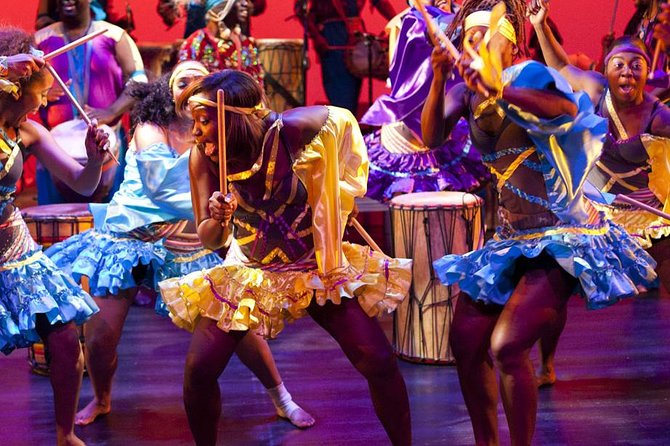
Cultural Events in Kenya
Kenya stands as a vibrant mosaic of over 40 diverse ethnic groups, each with its own unique languages, customs, cuisines, and traditional ceremonies. This rich tapestry of culture is expressed through music, dance, dress, and storytelling—elements that form the heartbeat of the nation’s identity. Cultural events provide a stage for these traditions to be passed down through generations, ensuring that heritage is preserved even as the country modernizes.
Beyond preservation, cultural events serve as powerful tools for unity. In a nation with such diversity, these gatherings offer spaces for different communities to interact, appreciate one another, and celebrate shared values. From local festivals to national celebrations, these events help build bridges, reduce ethnic tensions, and reinforce a collective sense of belonging.
Additionally, Kenya’s cultural events have grown into major attractions for both domestic and international tourists. They offer immersive experiences that connect visitors to the soul of the country. For event organizers, businesses, and cultural enthusiasts, these events present valuable opportunities to engage, collaborate, and contribute to Kenya’s vibrant social and economic life.
1. What Are Cultural Events?
Cultural events are vibrant public gatherings that celebrate the customs, heritage, and artistic expressions of a particular community, ethnic group, or nation. These events serve as platforms for showcasing a people’s unique way of life, values, and identity—often through dynamic displays of music, dance, fashion, food, rituals, and language. In Kenya, a country rich with over 40 distinct ethnic communities, cultural events are not only common but integral to national unity, tourism, education, and the preservation of traditional knowledge.
Cultural events are powerful vehicles for storytelling, dialogue, and cross-cultural exchange, offering both participants and audiences a window into the soul of a community.
1.1 Explanation and Core Elements
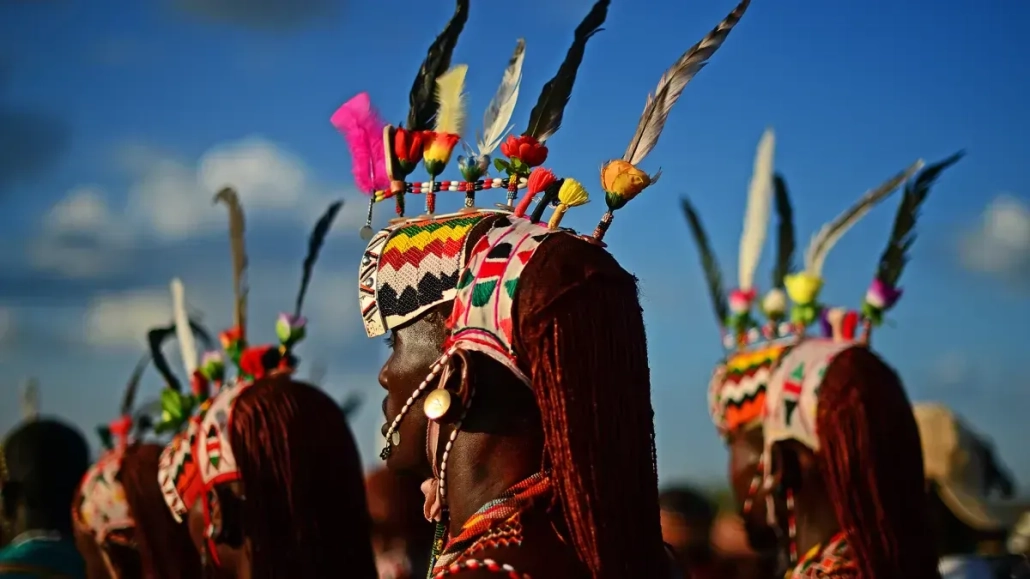
Cultural Events in Kenya
Cultural events refer to organized gatherings or festivals focused on presenting and celebrating the distinct traditions, beliefs, practices, and artistic expressions of a specific cultural or ethnic group.
They may take the form of:
-
Festivals and parades
-
Traditional ceremonies or rites of passage
-
Religious or spiritual observances
-
Heritage exhibitions and fashion showcases
-
Cultural food fairs and cooking contests
-
Live performances such as tribal music, storytelling, or dramatized folklore
These events are often open to the public and can be either community-driven or organized at national, county, or international levels. Their purpose is often multifaceted: promoting cultural pride, educating younger generations, attracting tourists, or fostering peace through cultural exchange.
1.2 Cultural Expressions in Kenya
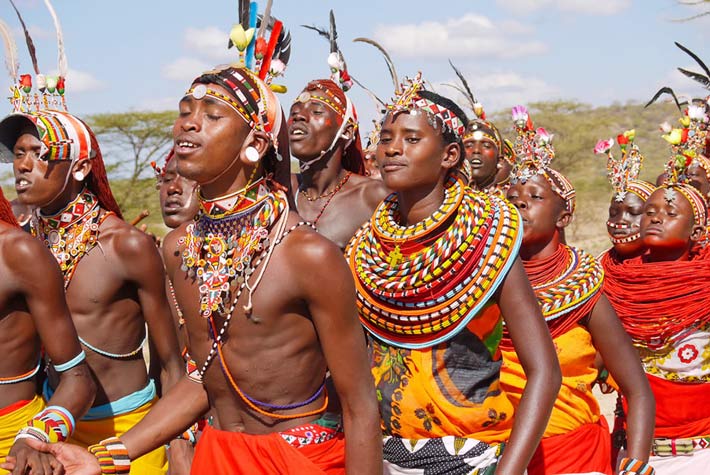
Cultural Events in Kenya
Some core cultural elements often featured in such events include:
-
Music and Dance: Traditional beats from nyatiti (Luo), isukuti drums (Luhya), or Maasai jumping dances create rhythmic displays of unity and heritage. Performances may be competitive or ceremonial in nature.
-
Language and Storytelling: Oral narratives, poetry recitals, and local dialect usage are often central to cultural events—used to preserve history, share morals, or entertain.
-
Cuisine: Food fairs that feature local delicacies like irio (Kikuyu), pilau (Swahili), nyama choma (nationally loved), or mursik (Kalenjin fermented milk) celebrate culinary heritage while offering guests immersive experiences.
-
Fashion and Body Art: Community-specific attire, beadwork, henna, and symbolic body painting often feature prominently to express identity, status, or ceremonial purpose.
-
Religion and Rituals: Some cultural events incorporate spiritual aspects, including prayers, blessings, or ancestral rites, reflecting deep-rooted belief systems.
-
Traditional Games and Sports: Games such as bao, wrestling, or spear-throwing may be featured as part of communal entertainment and competition.
1.3 Examples of Cultural Events in Kenya

Cultural Events in Kenya
Kenya celebrates numerous national and regional cultural festivals each year, drawing participants from across counties, borders, and continents. These include:
-
The Turkana Festival: Celebrated in Lodwar, this event brings together 14 pastoralist communities from Kenya, Uganda, and South Sudan to share traditional dances, crafts, and peace-building dialogues.
-
Lamu Cultural Festival: Held in the UNESCO World Heritage town of Lamu, this Swahili event features donkey races, dhow sailing, poetry, henna competitions, and traditional Swahili dishes.
-
Maragoli Cultural Festival: Celebrated every December 26th, it showcases the customs of the Maragoli people and neighboring Luhya subgroups through song, dance, and storytelling.
-
Lake Turkana Cultural Festival: Held annually in Loiyangalani, it unites communities like the Rendille, El Molo, Gabra, and Borana in a colorful celebration of peace, culture, and identity.
-
Kisumu Festival and Bomas Cultural Showcases: These bring together multiple Kenyan communities to display their customs, often accompanied by educational exhibitions and artisan fairs.
Cultural events are more than just colorful spectacles—they’re living expressions of identity, memory, and unity. In Kenya, where diversity is deeply woven into the national fabric, these events act as both celebrations and preservations of culture. They invite people from all walks of life to learn, appreciate, and participate in traditions that have defined communities for centuries.
Whether you’re attending as a visitor, a sponsor, or a member of the hosting community, cultural events offer an unmatched opportunity to experience Kenya’s soul in its purest, most celebratory form.
2. Top Cultural Events in Kenya
Kenya hosts a variety of cultural events that celebrate its vast heritage and promote national unity through music, dance, art, food, and storytelling. These festivals are more than just entertainment—they are powerful platforms for cultural preservation, peacebuilding, and economic development, especially through tourism. From the coastal regions of Lamu and Mombasa to the arid lands of Turkana and Samburu, each event reflects the distinct lifestyle and values of the hosting communities.
Below are some of the most renowned cultural festivals in Kenya, each offering a unique and immersive experience into the heart of the country’s diverse traditions:
2.1 Lamu Cultural Festival

Cultural Events in Kenya
-
Held annually in Lamu Old Town, a UNESCO World Heritage Site, this festival is one of Kenya’s most iconic cultural showcases. The town’s ancient architecture and winding streets provide a picturesque backdrop to the festivities.
-
It celebrates Swahili culture, a blend of African, Arab, and Persian influences. Key highlights include dhow sailing races, henna painting competitions, Swahili poetry recitals (mashairi), traditional dances, and donkey races.
-
The event fosters the revival of traditional Swahili practices, from language to cuisine, attracting both local and international visitors.
-
It plays a critical role in promoting cultural tourism, encouraging economic activity while preserving the identity of coastal communities.
2.2 Turkana Cultural Festival (Tobong’u Lore)
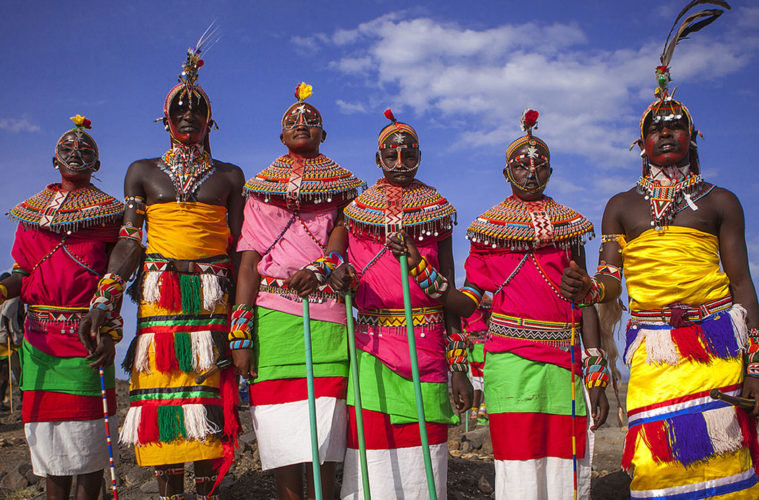
Cultural Events in Kenya
-
Named “Tobong’u Lore” which translates to “welcome back home” in the Turkana language, this festival is held in Lodwar, Turkana County.
-
It brings together over 12 indigenous communities from northern Kenya and neighboring countries such as Uganda, South Sudan, and Ethiopia, promoting cultural exchange and peaceful coexistence.
-
Events feature tribal music, indigenous cuisine, colorful attire, traditional rituals, and storytelling from elders, preserving rich oral histories.
-
Beyond cultural display, it supports regional peace-building, cross-border dialogue, and community empowerment through cultural pride and shared values.
2.3 Maralal Camel Derby
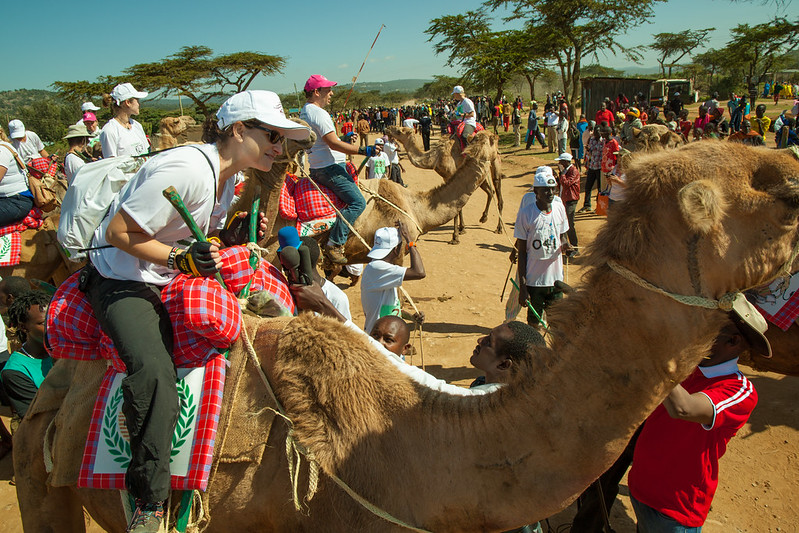
Cultural Events in Kenya
-
Hosted in Maralal town, Samburu County, the Maralal Camel Derby is one of Kenya’s most unique cultural sporting events. It combines cultural festivities with competitive camel racing, open to locals and tourists.
-
The event is deeply rooted in the lifestyle of nomadic communities such as the Samburu, Pokot, and Turkana, who use camels as part of their daily livelihood.
-
In addition to races, there are cultural dances, music, market fairs, and crafts exhibitions, offering visitors an authentic northern Kenya experience.
-
The derby promotes eco-tourism and adventure travel, while highlighting the need for environmental conservation and cultural preservation in arid lands.
2.4 Lake Turkana Festival
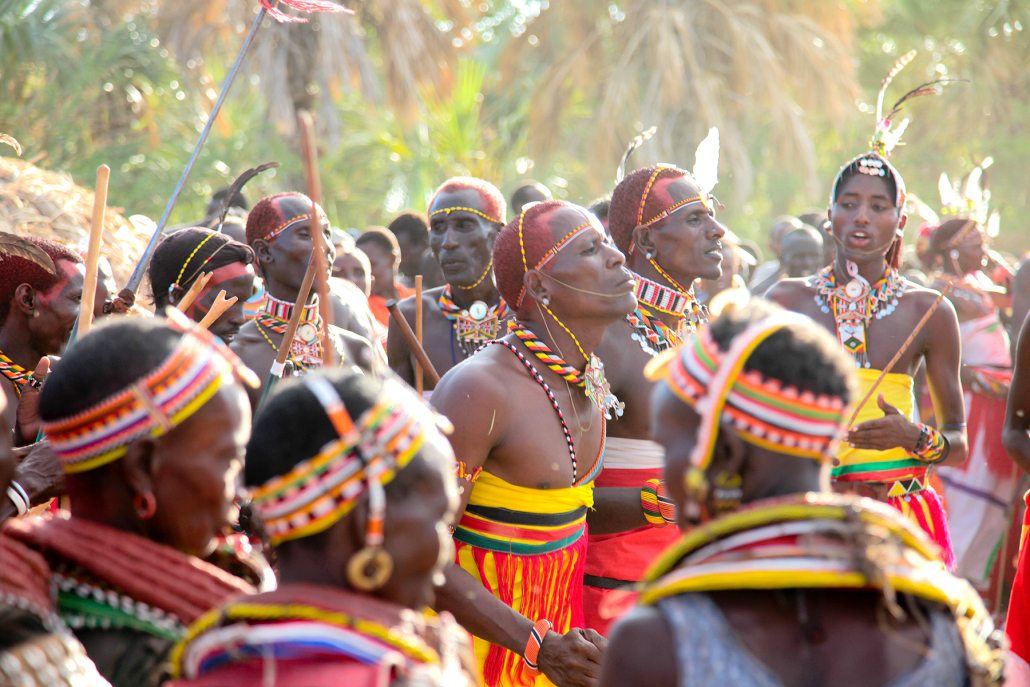
Cultural Events in Kenya
-
Held annually in Loiyangalani, a town on the shores of Lake Turkana, this festival is a colorful celebration of unity among the region’s diverse communities.
-
It brings together 14 ethnic groups including the El Molo, Rendille, Gabra, Samburu, Turkana, and Borana to showcase their distinct cultures, attire, languages, and performances.
-
Activities include traditional dances, songs, storytelling sessions, communal meals, and cultural exhibitions.
-
The event encourages mutual understanding, counters tribal marginalization, and promotes sustainable cultural tourism in Kenya’s remote north.
2.5 Mombasa Carnival

Cultural Events in Kenya
-
Organized by the Kenya Tourism Board, the Mombasa Carnival is an annual spectacle that celebrates the coastal region’s diversity, mixing modern entertainment with rich traditions.
-
Festivities feature colorful street parades with floats, Taarab music, traditional dances, food stalls, and cultural performances from various Kenyan communities.
-
Participants often don Swahili attire like kanzu, buibui, and kikoi, enhancing the festive ambiance with traditional fashion and jewelry.
-
The event is designed to boost domestic and international tourism while fostering cultural appreciation and intercommunity harmony in urban settings.
Cultural events in Kenya serve as powerful reminders of the country’s rich ethnic mosaic and shared heritage. From coastal festivals that celebrate Swahili traditions to desert gatherings that honor nomadic life, each event offers a rare chance to witness and participate in living history. These festivals not only preserve customs but also create platforms for peace, tourism, and sustainable development. Whether you’re a traveler, a cultural enthusiast, or a community member, attending these events is an unforgettable way to experience Kenya’s cultural soul.
3. Importance of Cultural Events to Kenya’s Identity and Economy
Cultural events play a vital role in shaping Kenya’s national identity and driving economic development. They are more than just celebratory gatherings; they are cornerstones of heritage preservation, social unity, and financial opportunity. In a country with more than 40 ethnic communities, cultural events foster pride, educate the public, attract tourists, and support creative industries. As Kenya continues to modernize, cultural events ensure that traditions are not lost but embraced as an asset for both identity and prosperity.
Below are four key ways cultural events contribute significantly to Kenya’s social fabric and economy:
3.1 Preserve Indigenous Knowledge and Promote Community Pride
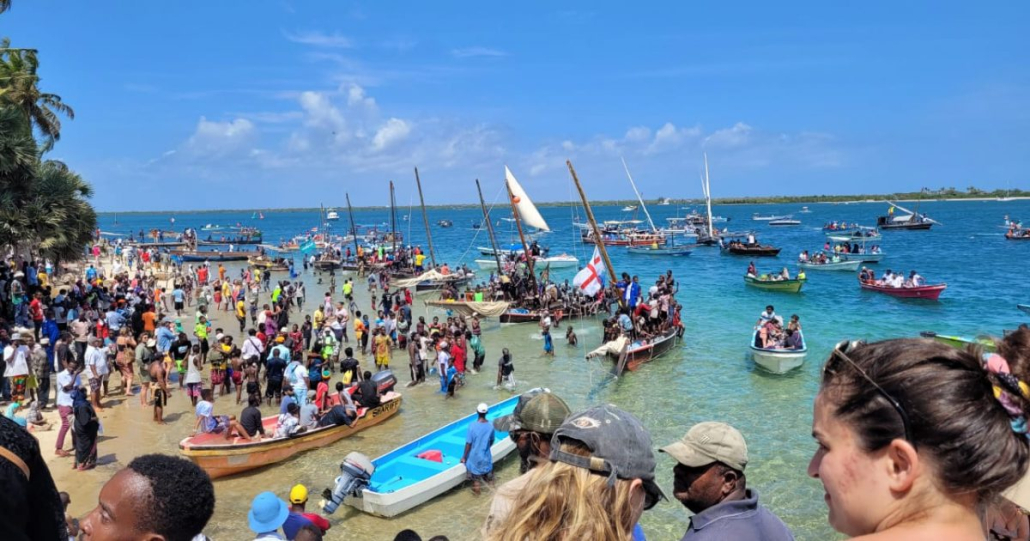
Cultural Events in Kenya
-
Cultural events act as repositories of indigenous wisdom, customs, and oral traditions that might otherwise fade in a fast-changing world. Elders, performers, and artisans share stories, songs, rituals, and practices that pass down generational knowledge.
-
These events create safe spaces for communities to showcase traditional medicine, spiritual beliefs, rites of passage, and heritage languages, helping to document and preserve endangered cultural elements.
-
By celebrating their roots, communities develop a stronger sense of pride and ownership over their identity. This pride strengthens intergenerational bonds and motivates younger people to stay connected to their heritage.
-
Government agencies, NGOs, and educational institutions often partner with local leaders during such events to document and archive cultural practices for future academic and heritage conservation efforts.
3.2 Strengthen Interethnic Understanding and Peaceful Coexistence
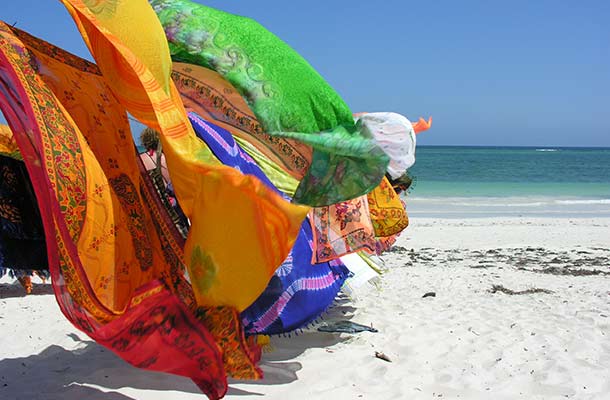
Cultural Events in Kenya
-
Kenya’s diverse ethnic composition can be a source of unity or division depending on how it is managed. Cultural events provide neutral platforms for different communities to interact, learn from each other, and celebrate their differences.
-
Festivals that bring together multiple tribes or regions—like the Lake Turkana Festival or Kenya Cultural Week—encourage mutual respect, build friendships, and reduce stereotypes or ethnic tensions.
-
These events promote social cohesion, especially in regions with historical intercommunal conflicts. Celebrating shared humanity through art and dance softens attitudes and inspires peace dialogue.
-
In post-election or post-conflict settings, cultural festivals have been strategically used to rebuild trust, engage youth in positive expression, and foster reconciliation efforts at the grassroots level.
3.3 Create Employment and Boost Tourism-Based Businesses
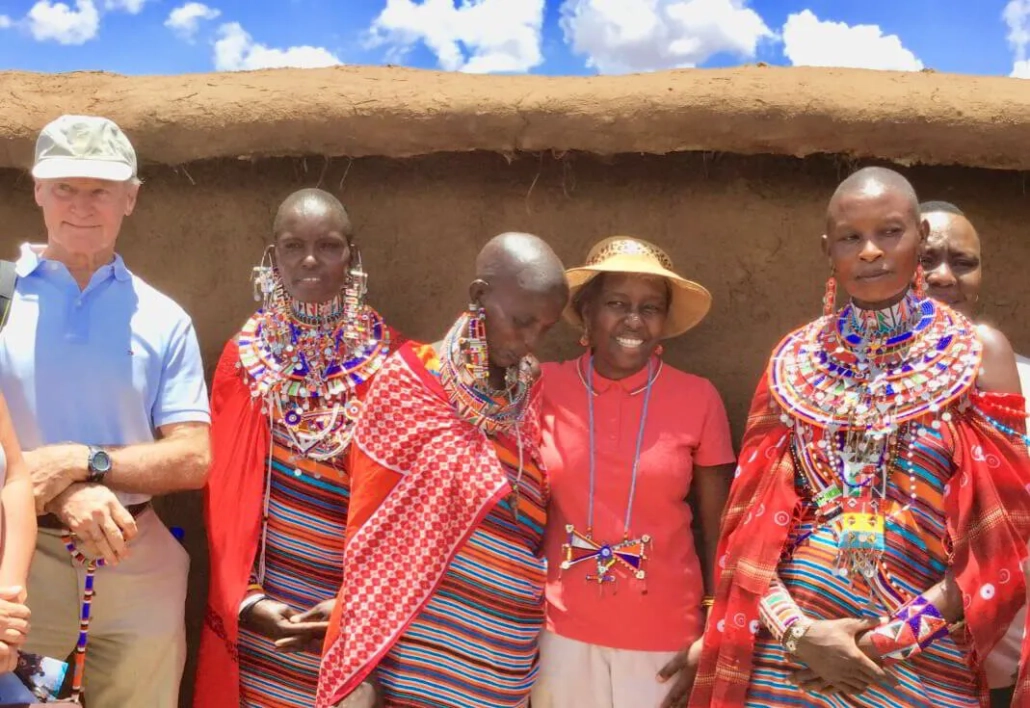
Cultural Events in Kenya
-
Cultural events generate direct and indirect employment opportunities. From event organizers and performers to food vendors and tour guides, many Kenyans benefit financially from festival-related activities.
-
Large-scale events attract local and international tourists, stimulating the hospitality sector—hotels, transport companies, souvenir sellers, and restaurants experience a surge in demand.
-
Counties hosting annual festivals see boosts in local revenue collection and increased visibility for investment. Counties like Lamu, Turkana, and Kisumu have all experienced this through sustained festival tourism.
-
The ripple effect also reaches small-scale businesses such as beadwork traders, costume designers, traditional instrument makers, and those offering services like sound setup, tenting, and decoration.
3.4 Offer Platforms for Cultural Entrepreneurs (Fashion, Crafts, Music, Dance)

Cultural Events in Kenya
-
Cultural events are powerful platforms for creative entrepreneurs to showcase and sell their art, skills, and ideas. This includes local fashion designers, jewelry makers, visual artists, dancers, drummers, chefs, and poets.
-
Designers draw from cultural motifs to create wearable art that tells stories and promotes African aesthetics. These events act as informal runways, often resulting in brand exposure and partnerships.
-
Artisans and craft vendors get an opportunity to demonstrate traditional skills, such as weaving, pottery, beadwork, or wood carving, which helps preserve dying crafts while monetizing their talents.
-
Musicians and dancers from minority groups gain audiences beyond their villages. In many cases, cultural events serve as launchpads for national or even international recognition of cultural talent.
Cultural events in Kenya are not just about celebration—they are engines of identity preservation, unity, and economic empowerment. They honor indigenous knowledge, bridge cultural divides, create jobs, and support a vibrant creative economy. As Kenya looks toward a sustainable and inclusive future, investing in and protecting cultural events will remain crucial for preserving what makes the nation truly unique. For planners, policy makers, and citizens alike, these festivals are opportunities to uplift communities, grow the economy, and celebrate what it means to be Kenyan.
4. Audio Visual Support for Cultural Events – Enhancing Experience

Cultural Events in Kenya
Cultural events in Kenya thrive on storytelling, music, performance, and visual artistry. To truly bring these expressions to life—and make them accessible to wider audiences—reliable audio visual (AV) support is essential. Whether it’s a traditional dance under the stars in Samburu or a Swahili poetry performance in Lamu, proper AV integration enhances immersion, clarity, safety, and impact. For organizers, partnering with an experienced AV provider ensures that every drumbeat, every chant, and every visual element is captured and delivered professionally—even in remote or outdoor settings.
Below is how AV support, especially from Peak Audio, transforms cultural festivals into unforgettable experiences:
4.1 Sound Systems for Live Music and Speeches
-
Clear and powerful sound is at the heart of any cultural performance. From traditional choirs and drumming troupes to keynote addresses by elders or officials, sound systems amplify voices and instruments to reach every corner of the venue.
-
AV support includes wireless microphones, lapel mics for mobility, digital sound mixers, and high-performance speakers that suit both indoor and outdoor spaces.
-
These systems ensure auditory clarity even in challenging open-air environments where wind and distance can affect sound travel.
-
Peak Audio tailors setups to respect cultural acoustics, ensuring authenticity is maintained—especially in ceremonies that rely on voice intonation, chants, or live instruments like nyatiti, orutu, and drums.
4.2 Lighting for Evening Events and Cultural Performances
-
Many cultural events extend into the night—requiring thematic lighting to highlight performances, pathways, and key event areas.
-
Proper lighting adds atmosphere and visibility, transforming ordinary stages into vibrant showcases of color and tradition. This includes stage lights, ambient uplighting, LED patterns, and spotlighting for solo acts.
-
Special attention is given to rituals or performances involving costumes, masks, or movement, where lighting can elevate the drama and spectacle.
-
In heritage sites or outdoor venues without built-in lighting, Peak Audio provides temporary but stable lighting infrastructure that meets safety standards while enhancing visual appeal.
4.3 Screens and Projectors for Storytelling, Films, and Live Feeds
-
Cultural festivals often include multimedia storytelling, video documentation of history, or the screening of traditional films and oral history archives.
-
LED screens and digital projectors are used to broadcast videos, showcase presentations, or display live camera feeds for large audiences.
-
These tools are especially useful in events where traditional language translations, remote participation, or archival footage need to be shared with attendees.
-
Peak Audio ensures high-resolution visuals with anti-glare screens and portable rigs, making even daytime outdoor screenings feasible.
4.4 Staging and Rigging for Open-Air and Remote Performances
-
In many cultural festivals, performances are held in temporary or unconventional spaces such as savannah fields, community grounds, or heritage compounds.
-
Peak Audio provides modular stage platforms, rigging for traditional props, and mobile performance structures that can be quickly assembled and dismantled without damaging natural environments.
-
These stages are weather-adaptable, ensuring stability during sudden wind or rain while preserving safety for dancers, speakers, and musicians.
-
Rigging support includes banner frames, flag hoists, truss lighting, and cultural décor integration, allowing organizers to tell their story not just through performance, but through stage architecture.
4.5 Portable Power for Off-Grid Locations (e.g., Turkana, Lamu)
-
Some of the richest cultural events take place in rural or heritage locations that lack reliable access to grid electricity.
-
Peak Audio solves this with portable power stations, battery backups, solar integration, and silent diesel generators—ensuring all AV equipment runs uninterrupted.
-
This enables organizers to host full-scale events with lighting, sound, projection, and security systems even in the heart of remote areas like Turkana, Loiyangalani, or Kipini.
-
The team also ensures minimal environmental impact, using low-emission power systems aligned with sustainable event practices.
4.6 Peak Audio – Tailored AV & Logistics Support for Cultural Events
-
Peak Audio doesn’t just deliver gear—it delivers culturally respectful, technically reliable, and site-specific AV support. Every solution is customized to meet the unique needs of cultural events, whether in heritage towns, outdoor spaces, or religious centers.
-
Services include venue scouting, AV planning, full setup, real-time support, backup power, and post-event dismantling—all done in collaboration with community leaders and event organizers.
-
The team understands the delicate nature of cultural spaces and rituals, and ensures that all technical installations preserve the sanctity and storytelling goals of the event.
-
With decades of experience supporting government functions, NGO-led festivals, and grassroots celebrations, Peak Audio is a trusted AV partner for Kenya’s cultural landscape.
Audio visual support plays a transformative role in bringing cultural events in Kenya to life. It ensures that voices are heard, visuals are seen, emotions are felt, and traditions are preserved with integrity. Whether you’re hosting a lakeside festival, a historical reenactment, or a night-time ritual, having the right AV partner—like Peak Audio—ensures your story doesn’t just get told, it gets experienced. With the right tools and expertise, culture becomes performance, memory becomes legacy, and tradition becomes global.
5. Planning or Attending a Cultural Event in Kenya – What to Know
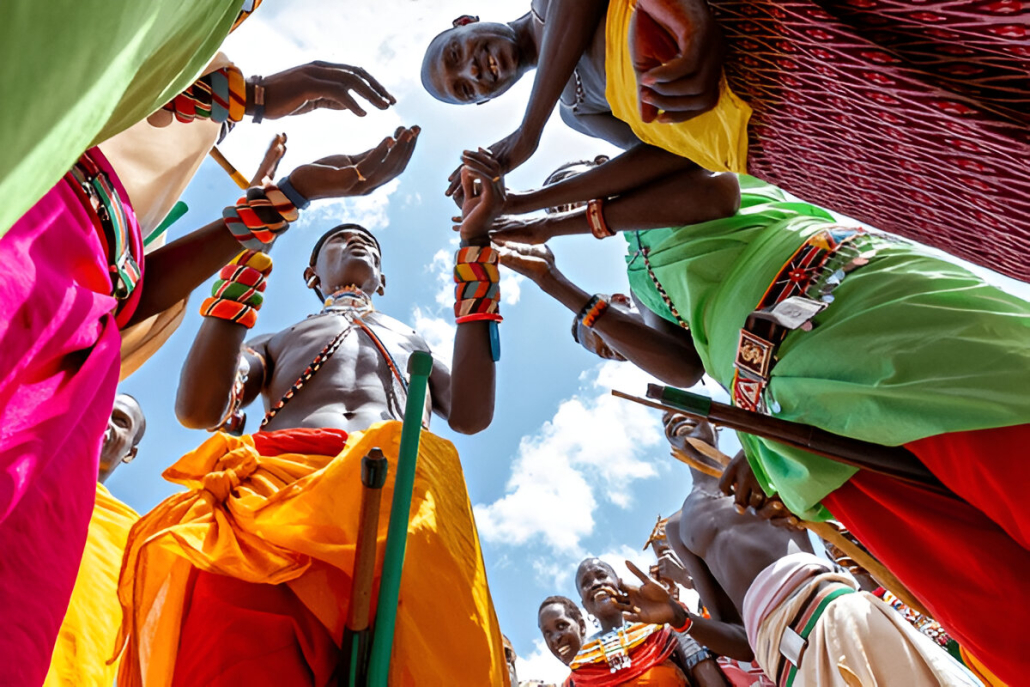
Cultural Events in Kenya
Cultural events in Kenya offer rich, immersive experiences that celebrate the country’s diversity—from the music and dances of the Maasai to the Swahili poetry of the coast and the harvest festivals of the western highlands. Whether you are an organizer planning a festival or a visitor attending one, understanding the cultural, logistical, and social landscape is crucial for a respectful and fulfilling experience. The following insights help ensure that both participation and coordination are thoughtful, impactful, and mutually enriching.
5.1 Respect Cultural Norms
-
Cultural sensitivity is key when engaging with communities across Kenya. Every region has its own customs regarding dress, interaction, greetings, and acceptable behavior.
-
Before attending or planning, learn about specific cultural practices, such as whether shoes should be removed before entering a shrine or what role elders play in ceremonies.
-
Dress codes often reflect respect and modesty, especially in religious or initiation contexts. Wearing culturally inspired attire (when invited to do so) shows solidarity and appreciation.
-
For organizers, it’s important to consult local cultural leaders to ensure that the programming, staging, and messaging do not unintentionally offend or misrepresent traditions.
5.2 Budget for Travel and Accommodation
-
Many of Kenya’s cultural events are held in remote or rural areas such as Lamu, Turkana, Loiyangalani, or Kakamega. Accessibility may be limited, and infrastructure may be basic.
-
Early planning is essential—flights or long-distance buses may get fully booked, and accommodation near the event site may be scarce or in high demand.
-
Attendees should consider budgeting for lodging, transport, meals, and local guides. Organizers should offer travel tips, partnerships with hotels or homestays, and information on safe routes.
-
If the event is held in a conservation area or heritage site, park entry fees or community contributions may also apply. These often support local development or environmental preservation.
5.3 Document the Experience
-
Cultural events are not just performances—they are living archives of Kenya’s diverse identities. Capturing the moment helps preserve this richness for future generations and global audiences.
-
Attendees can document using photos, videos, journals, or social media (with sensitivity). Seek permission before photographing rituals, elders, or children, especially during sacred or private moments.
-
Organizers should consider hiring professional content creators to tell the story visually and narratively. This helps with promotion, funding, and legacy creation.
-
At the end of the event, storytelling—through blogs, short documentaries, or recap reels—can help extend the event’s impact far beyond the day it was held.
5.4 Partner with Local Organizers
-
One of the best ways to ensure authenticity and sustainability is by co-creating the event with local stakeholders—elders, youth groups, performers, and community organizations.
-
This fosters trust, accurate representation, and meaningful community involvement. It also enables the sharing of revenues, skills, and visibility.
-
For attendees, booking through or volunteering with local tour operators or cultural collectives ensures that your presence is welcomed and your contributions support the host community.
-
Peak Audio often works with local event coordinators to ensure technical needs align with cultural protocols, creating an event that feels seamless but deeply rooted in local identity.
Cultural events in Kenya are vibrant expressions of community, history, and identity. Whether you’re planning or attending, taking the time to respect cultural protocols, plan logistically, document meaningfully, and engage locally enriches the entire experience. These gatherings are not just entertainment—they are bridges between generations, between regions, and between Kenya and the world. With the right approach, every event becomes a powerful celebration of heritage and humanity.
6. How Organizations Can Support Cultural Events in Kenya
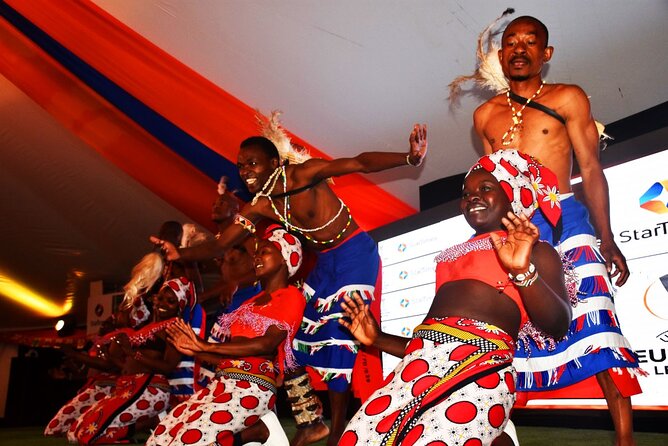
Cultural Events in Kenya
Kenya’s cultural events offer organizations a unique opportunity to align their brand with community identity, national pride, and social impact. Whether through sponsorship, resource provision, or collaborative programming, companies and institutions can make meaningful contributions while also gaining positive visibility and long-term goodwill. Supporting these events isn’t just a marketing strategy—it’s an investment in heritage, inclusion, and sustainable development.
Below are detailed ways organizations can effectively support cultural events across Kenya:
6.1 Sponsor Local Festivals to Build Brand Loyalty and Community Goodwill
-
Sponsorship is one of the most impactful ways companies can support cultural events. By providing financial backing, organizations help festivals secure performers, venues, permits, and publicity.
-
In return, sponsors enjoy brand exposure through event signage, media mentions, branded merchandise, and speaking opportunities. This visibility is organic and emotionally resonant—especially in festivals rooted in heritage and unity.
-
Supporting cultural events positions a brand as community-conscious, helping foster loyalty among customers and community leaders. For example, sponsoring a Pokomo harvest festival or Luo music gala builds regional trust while showcasing national inclusivity.
-
Sponsorship can also include dedicated themed segments, such as a branded stage, youth zone, or cultural competition—tailored to the sponsor’s mission and the event’s focus.
6.2 Provide Gear, Tents, AV Systems, or Logistics Support
-
Not every contribution needs to be monetary. Many cultural events—especially in rural or informal settings—struggle with infrastructure gaps like lack of tents, portable toilets, or audio-visual (AV) gear.
-
Organizations can step in by providing in-kind donations such as sound systems, LED screens, event furniture, backup generators, crowd barriers, signage, or branded shade tents.
-
Logistics support like transportation for performers, fuel for power, mobile stages, or technical staff is also highly valued.
-
For instance, partnering with companies like Peak Audio can allow organizations to co-fund high-quality AV setup while letting the community focus on cultural content.
6.3 Collaborate with Cultural Groups to Co-Create Inclusive Programs
-
True cultural support goes beyond visibility—it’s about co-creation. Organizations can work with local artists, youth groups, cultural elders, and NGOs to design inclusive, respectful programming that aligns with community values.
-
This might involve curating content, organizing thematic workshops, funding training sessions for traditional arts, or including cultural content in corporate events.
-
Collaborative efforts allow for deeper engagement and ensure that the resulting event doesn’t just carry a corporate logo—it carries community voice and ownership.
-
Such partnerships can also produce long-term cultural education outcomes, such as recorded oral histories, art installations, or mentorship for young creatives.
6.4 Use Cultural Events as Part of Corporate Social Responsibility (CSR) Strategies
-
Cultural support fits naturally into CSR frameworks, especially for brands that emphasize education, community development, social inclusion, or youth empowerment.
-
Instead of only focusing on charity or donations, cultural sponsorship offers high-visibility CSR opportunities that connect emotionally with both local and national audiences.
-
Participating in events like the Lake Turkana Cultural Festival, Maragoli Cultural Day, or Swahili Cultural Week allows companies to support community pride, preserve heritage, and contribute to the UN Sustainable Development Goals (SDGs), especially on culture and sustainable cities.
-
CSR reports can highlight impact metrics, such as number of artists supported, equipment donated, or communities reached—helping improve brand credibility in both social and investor circles.
Supporting cultural events in Kenya is a win-win strategy for organizations looking to uplift communities while building brand equity. Whether through sponsorship, logistics, collaboration, or CSR initiatives, companies can help safeguard Kenya’s rich heritage while engaging meaningfully with the people they serve. Cultural events are more than celebrations—they are platforms for connection, transformation, and legacy. By participating actively, organizations become part of that story—not just as sponsors, but as cultural allies.
7. FAQs – Cultural Events in Kenya
Q1: What are the most attended cultural events in Kenya?
Kenya is home to several highly attended cultural events that draw thousands of participants from across the country and beyond. Among the most popular are:
-
The Lake Turkana Cultural Festival, which brings together over 14 ethnic communities to celebrate traditional dance, music, and crafts in Loiyangalani.
-
Lamu Cultural Festival, a coastal event celebrating Swahili heritage, dhow sailing, poetry, and cuisine, held in the historic town of Lamu.
-
Maragoli Cultural Festival, known for its elaborate traditional performances and New Year’s Eve celebrations in Western Kenya.
-
Kisumu Street Carnival, which combines Luo cultural showcases with urban art, music, and fashion.
-
National events like Mashujaa Day and Madaraka Day also integrate regional cultural displays and performances, often coordinated by county governments.
These events are celebrated for their authenticity, colorful pageantry, and ability to unite communities through culture.
Q2: Are cultural events suitable for children and families?
Yes, most cultural events in Kenya are family-friendly and intergenerational by nature. They are often rooted in communal practices that involve elders, youth, and children together. Here’s what to expect:
-
Events typically feature traditional games, music, storytelling, and dance that children can engage with or observe.
-
Cultural festivals are educational, offering families a chance to learn about their own heritage or appreciate the traditions of other communities.
-
Some events have dedicated kids’ zones or learning tents with crafts, face painting, or child-safe performances.
-
Families should still check the event’s program or speak with organizers beforehand to ensure that timing, venue safety, and content are appropriate for their children.
Whether attending a pastoralist dance in Samburu or a Swahili poetry session in Mombasa, cultural events are great for building shared experiences across generations.
Q3: Can tourists participate in these festivals?
Absolutely. Kenya’s cultural festivals are not just open to tourists—they actively welcome international visitors as part of cultural exchange and heritage promotion. Tourists can:
-
Attend as observers or invited guests, enjoying the food, performances, and exhibitions.
-
Participate in workshops, craft sessions, or guided storytelling to deepen their understanding of local traditions.
-
Purchase local crafts or attire and join dances (when allowed) to experience the spirit of the community.
-
Engage through photojournalism, content creation, or travel writing, but always with respect for privacy and cultural sensitivities.
Some events even offer volunteer programs or cultural immersion packages coordinated through local NGOs or tourism boards. Visitors are encouraged to ask for consent before taking photos, dress modestly where appropriate, and approach events with openness and humility.
Q4: How can I support a local cultural event as a business or individual?
Supporting a cultural event can take many forms, depending on your resources and interests:
-
Businesses can become sponsors, offer AV equipment, donate tents or logistics support, or co-brand segments of the event with cultural groups.
-
Individuals can volunteer their time, donate toward specific needs (like school dances or community transport), or help raise awareness through social media.
-
Attending the event, buying locally made goods, and sharing the experience through respectful storytelling also contributes to sustainability.
-
You can also partner with organizers to host a cultural dialogue, donate to a heritage preservation cause, or fund a youth talent show within the event.
Your involvement not only enhances the event’s success but also promotes cultural pride, education, and preservation for future generations.
Q5: Do cultural events require special permits or approvals?
Yes, most cultural events—especially those held in public spaces—require permits and clearances. These vary based on the event size, location, and nature. Here’s what to consider:
-
County government approvals are required for use of parks, streets, or stadiums. This includes safety checks and event scheduling.
-
Public Health and Safety protocols must be followed, including sanitation, security, and first aid requirements.
-
Music Copyright Society of Kenya (MCSK) and Performers Rights Society may require clearance if music is being played or recorded.
-
Events with foreign guests, religious elements, or high-profile speakers may also require clearance from the National Police Service or Ministry of Interior.
-
Cultural events that involve traditional rites or restricted content should be handled in close consultation with community elders and local leaders to avoid conflict or misrepresentation.
For first-time organizers, it’s advisable to work with event management firms, local chiefs, or cultural organizations who understand the regulatory landscape.
Experience the Soul of Kenya Through Cultural Events with Peak Audio
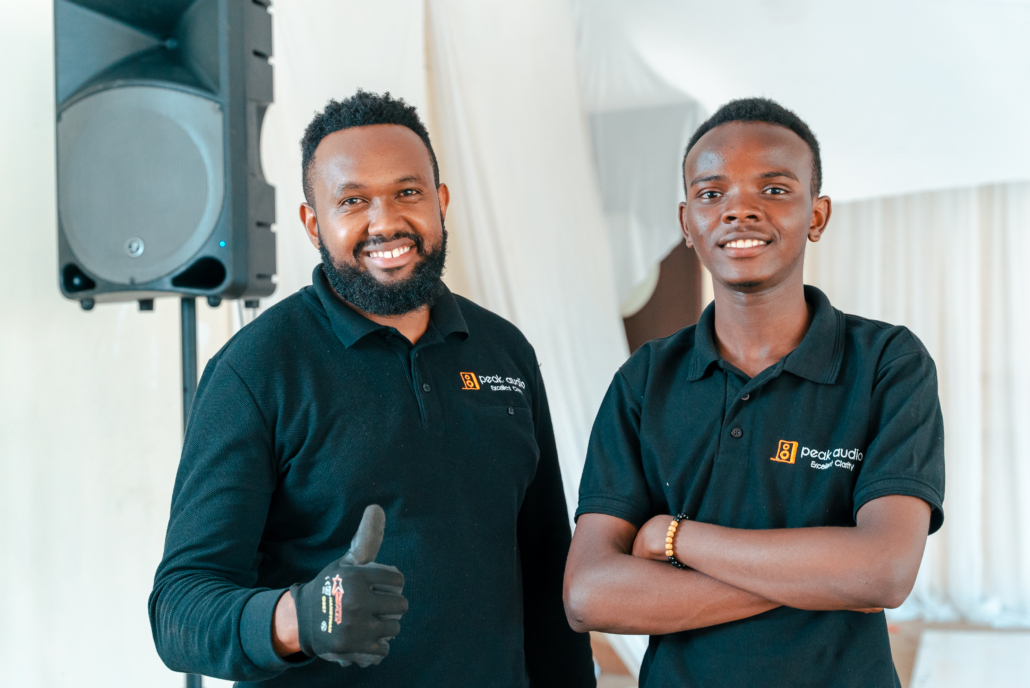
Cultural Events in Kenya
Cultural events in Kenya go beyond spectacle—they embody the essence of who we are as a people. From traditional dances in remote villages to vibrant urban festivals, these gatherings connect generations, preserve heritage, and foster a shared sense of identity. They are powerful tools for unity, education, and even environmental awareness, making them essential to the country’s social and cultural landscape.
Whether you’re planning to attend, organize, or support one, participating in a cultural event offers a rare chance to experience Kenya’s diversity in its most authentic form. It’s an opportunity to learn, celebrate, and contribute to something much bigger than yourself—while creating memories that last a lifetime.
If you’re hosting a cultural celebration and need reliable sound, staging, or lighting that complements the energy and tradition of your event, Peak Audio is here to help. With tailored AV solutions and extensive experience in outdoor and heritage events, Peak Audio ensures your cultural story is heard, seen, and remembered.
Leave a Reply
Want to join the discussion?Feel free to contribute!